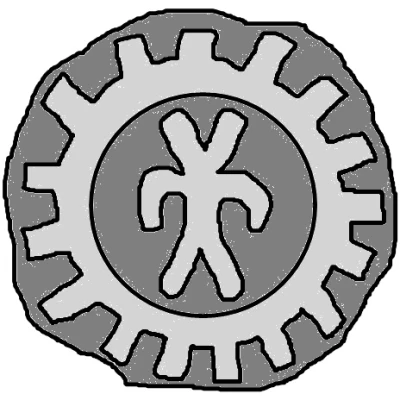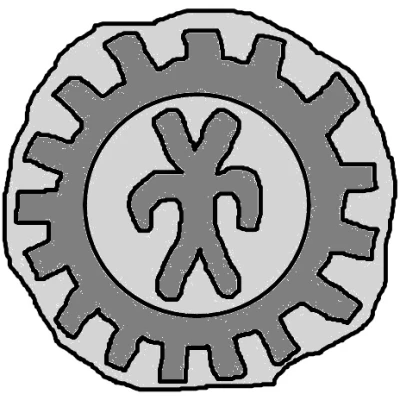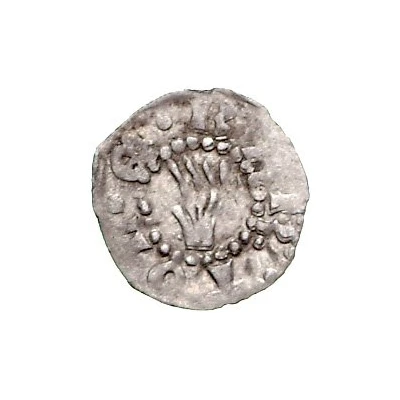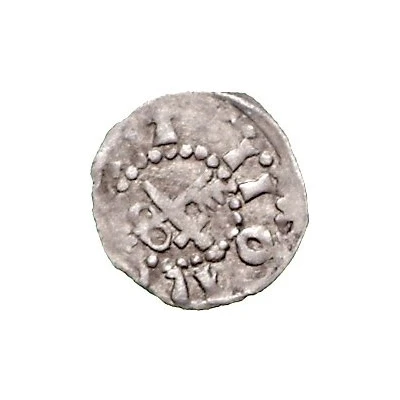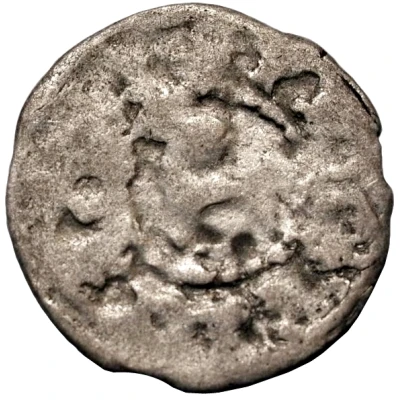
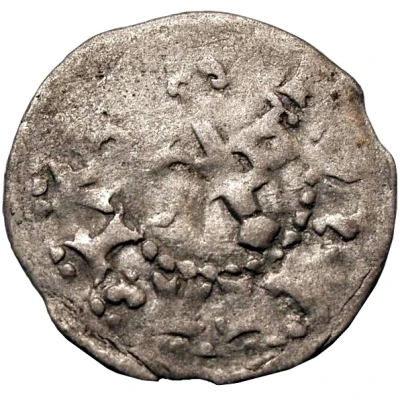

© Haljak Coin Auction
1 Pfennig - Dietrich III Resler ND
| Billon | 0.39 g | 13 mm |
| Issuer | Bishopric of Dorpat (Livonian Confederation) |
|---|---|
| Bishop | Dietrich III Resler (1413-1426) Dietrich Gronow (1427-1440) |
| Type | Standard circulation coin |
| Years | 1426-1441 |
| Value | 1 Pfennig = ⅓ Schilling |
| Currency | Schilling (1422-1558) |
| Composition | Billon |
| Weight | 0.39 g |
| Diameter | 13 mm |
| Thickness | 0.5 mm |
| Shape | Round (irregular) |
| Technique | Hammered |
| Orientation | Variable alignment ↺ |
| Demonetized | Yes |
| Updated | 2024-10-06 |
| Numista | N#142046 |
|---|---|
| Rarity index | 100% |
Reverse
Crossed sword and key surrounded by legend.
Script: Latin (uncial)
Lettering: MOnETA · TARB ·
Lettering (regular font): MONETA · TARB ·
Unabridged legend: Moneta Tharbat
Translation: Coin of Dorpat
Edge
Plain
Comment
In 1426, at the end of the Livonian Order's monetary reform, the Lübische's name was changed to Pfennig. While this coin is sometimes given Dietrich III Resler's full date-range (1413-1441), this coin has the ruler's symbol on the obverse rather than a crossed sword and key, indicating this coin was minted as a Pfennig after the end of the monetary reform.Some sources list the ruler as being Dietrich III Resler, while other sources list the ruler as being Dietrich IV Resler.
It is currently unknown whether this coin belonged to Dietrich Resler or Dietrich Gronow. Once it is established, this page will be updated.
Interesting fact
One interesting fact about the 1 Pfennig coin from the Bishopric of Dorpat is that it features a unique blend of Christian and pagan imagery. The obverse side of the coin depicts a cross, which symbolizes Christianity, while the reverse side features a image of a pagan deity, which reflects the cultural influences of the region at the time. This blending of religious symbols is a fascinating example of the cultural exchange and syncretism that occurred during the Middle Ages.
